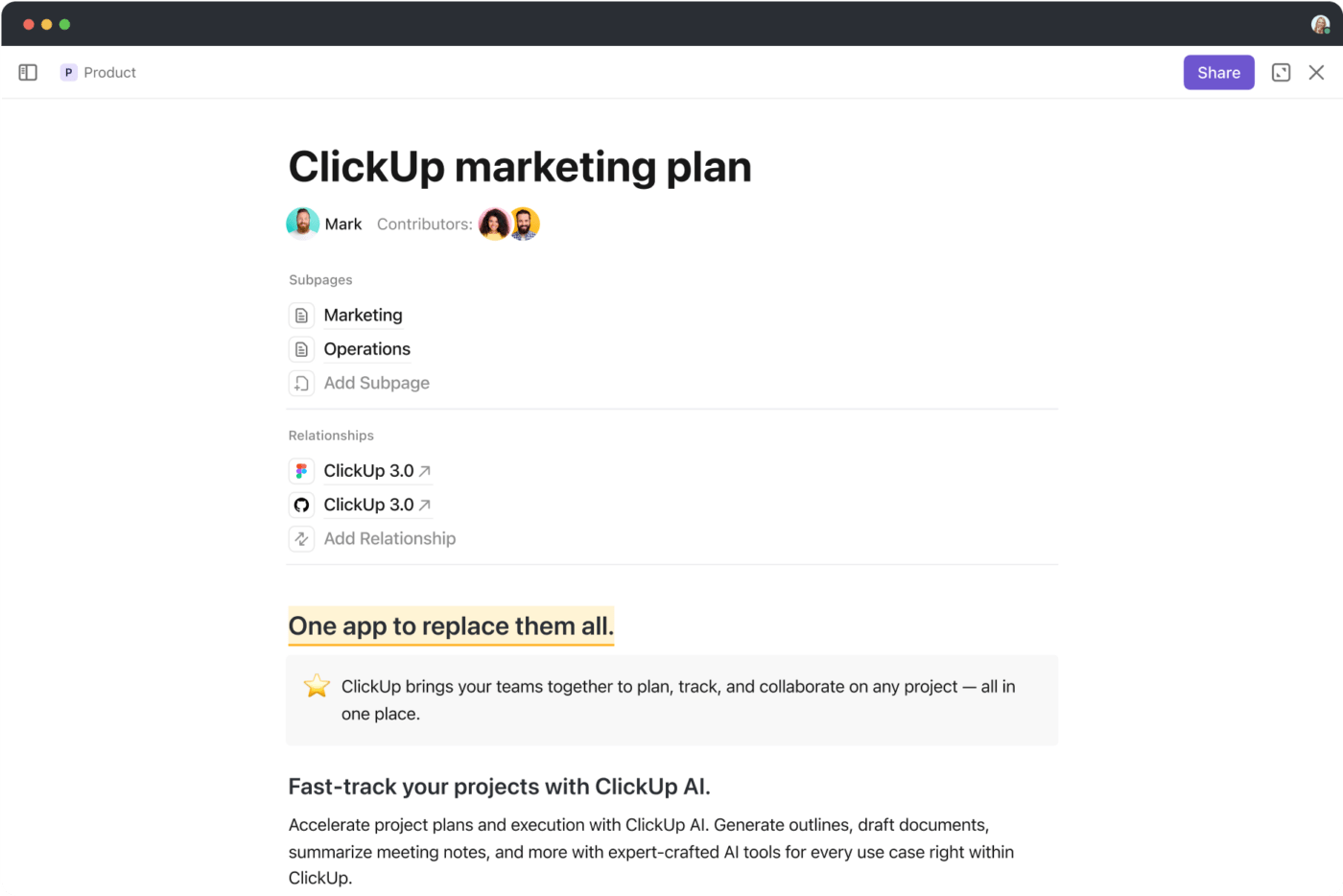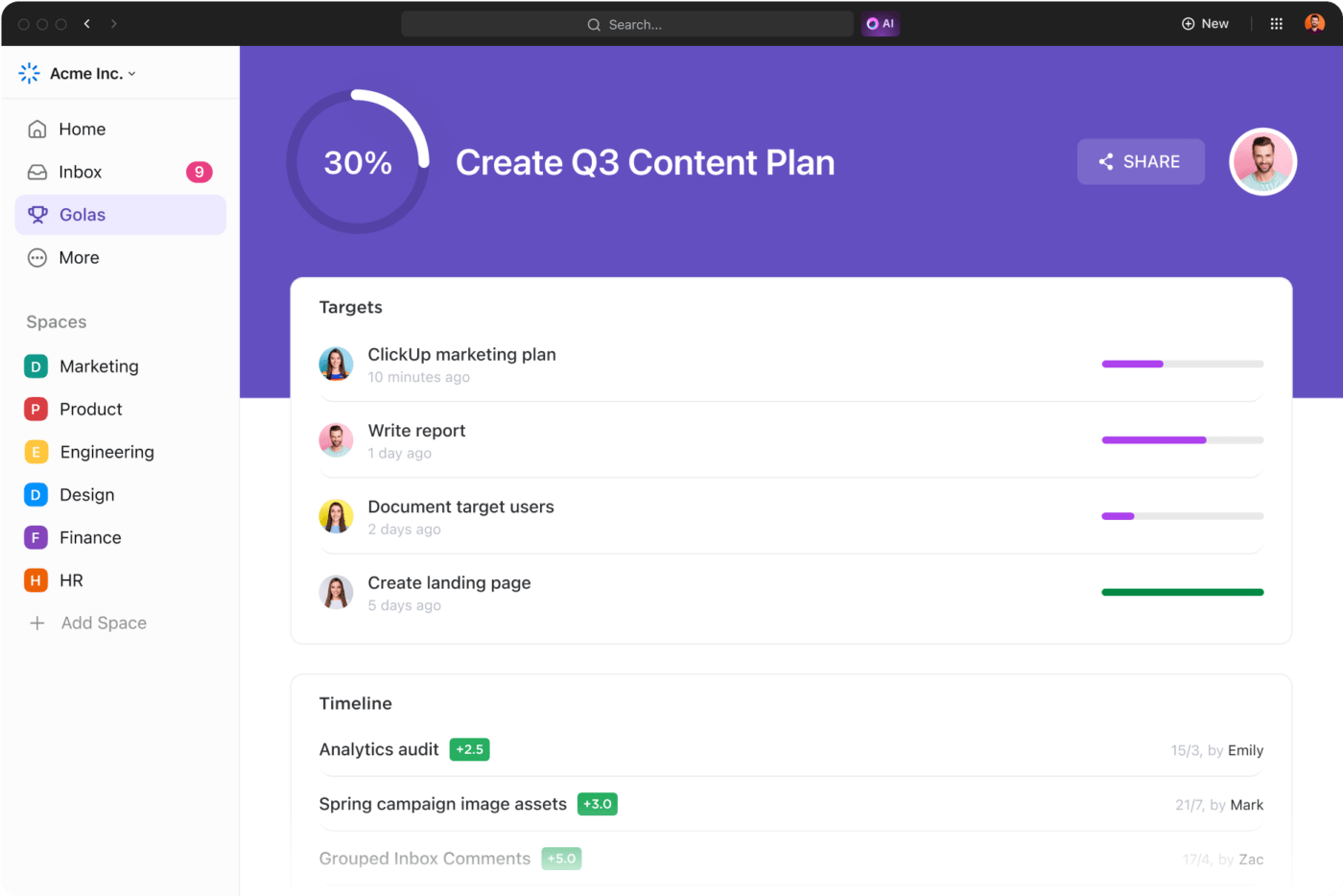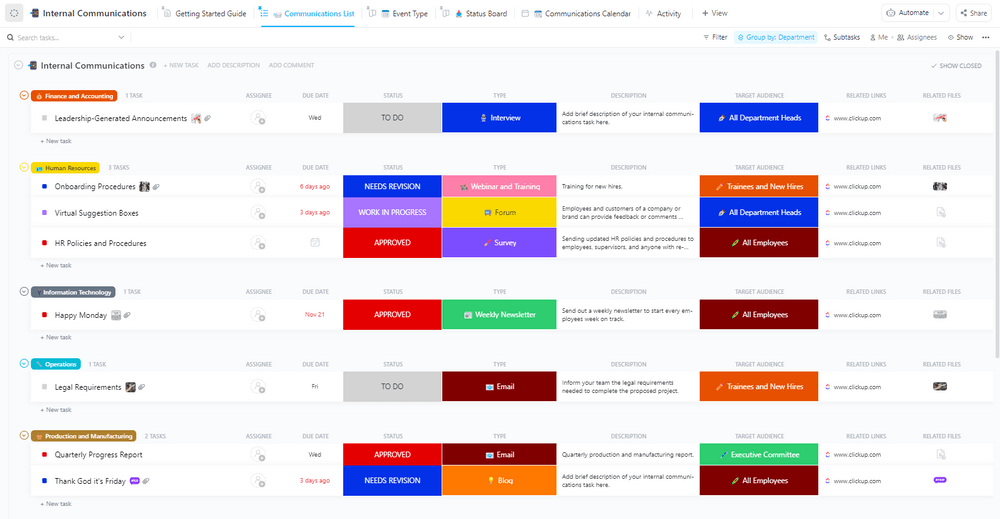Team Synergy: Key Elements, Challenges, and Implementation Strategies

Sorry, there were no results found for “”
Sorry, there were no results found for “”
Sorry, there were no results found for “”
Team synergy has to be one of the most overused buzzwords in the business space today. While most of us vaguely get this concept, we may still struggle to convert it into actionable business strategies.
Team synergy is more than just a buzzword, though. It’s not only about working together in harmony but also about leveraging team collaboration to get the best collective output.
The concept has gained even more traction in highly demanding environments like project management or human resource (HR) planning, where having a shared vision is crucial to helping teams feel empowered and surpass common challenges with more aligned decision-making.
In this article, we’ll reveal the various concepts related to team synergy and introduce you to:
The term synergy originated from the Latin word synergia, meaning cooperation. Synergia is further derived from the Greek word sunergos, which means working together. In a business context, it refers to team members collaborating to create something more valuable than their individual efforts. From a more practical viewpoint, this entails activities like:
Team synergy can be better understood from the perspective of any sports team—it’s not the individual skills and capabilities of the players that matter but how the team works in unison to win. ⚽
If team synergy sounds a lot like teamwork, it’s for a good reason. Teamwork is an integral part of team synergy, and it represents the act of working together. Synergy, however, is the broader concept of collaboration reaching its full potential. Think of teamwork as running a marathon and team synergy as crossing the finish line. 🏃
You can also note a difference in terms of group communication. While teamwork requires effective communication practices, team synergy entails profound knowledge of every team member’s communication and work styles to ensure smooth collaboration and goal completion.
Pro tip: Quality team documentation, communication, and knowledge management play a key role in facilitating synergy within teams. This is why we recommend using the ClickUp Team Docs Template to create an adaptable skeleton of your team’s processes, objectives, and work styles for free! 💗

The type of synergy we discussed above is mainly positive synergy. It occurs when the team as a whole functions better than its members would on their own.
However, a team’s synergy can also be negative. Negative synergy happens when the team doesn’t function well despite its members being competent individuals. Here’s a comparative outline of each type:
| Parameter | Positive Team Synergy | Negative Team Synergy |
| Team sentiment | Teams foster a positive team dynamic where each member feels heard, understood, and appreciated | Team members may feel unheard, misunderstood, or underappreciated due to conflicts, miscommunication, or other factors |
| Work culture | A positive work environment where everyone clearly understands their roles and believes they can achieve common goals through efficient collaboration | A toxic work environment where the lack of clarity over roles and tasks lowers the quality of output |
| Resource management and efficiency | Teammates rely on each other’s expertise to avoid duplicate work and get things done faster | Teams are not aligned and tend to waste resources on unproductive work |
Positive team synergy highly depends on strong teamwork and leadership. As a team leader or an HR manager, you need to understand the four key elements that ultimately lead teams to collaborate effectively. 👇
The overall success of any team depends on the trust and respect its members have for one another. They should believe in their collective abilities and acknowledge the skills and input each team member brings to the table.
The leadership should take steps to make team members feel valued and have psychological safety in the workplace, especially if they come from different backgrounds. This helps them feel comfortable sharing ideas, support other team members, and take pro-team risks.
Open communication is at the core of team synergy—it promotes mutual understanding and collaborative problem-solving. By encouraging open dialogue among team members, you can use continuous feedback for future quality and process improvements. This also leads to fewer conflicts and fosters a positive team culture where everyone feels included.
What’s the most wildcard element of team synergy? Diversity in skill set.
Team members with different skills and specializations complement each other across projects. Think how product managers collaborate with engineers or marketers before the product launch—their diverse perspectives can lead to synergistic benefits like innovative solutions and enhanced productivity, depending on the unique mix of professional and interpersonal skills.
Tip: Looking to create an innovative team with greater creativity and synergy? Use the ClickUp Capability Matrix Template to map your team’s core capabilities, identify skill gaps, and plan training, peer mentoring, and hiring goals. You can also use it to allocate tasks based on each member’s strengths and reduce inefficiencies. 💪

Alignment towards a shared goal can enhance team synergy as it fosters unity and enhances an employee’s personal commitment toward a deliverable. Keep teams engaged with the same vision and watch them collaborate more efficiently and stay the course.
Here are six common challenges that create disconnected teams and lead to negative team synergy:
Luckily, you can easily beat these challenges using team synergy best practices and strategies, which are explained in the following section.
A team’s interpersonal skills, like active listening, problem-solving, and providing constructive feedback, heavily contribute toward building positive synergy in the long run. You must also pay attention to leadership aspects like timely delegation, time management, strategizing, and work organization for effective teamwork.
Let’s take a look at the best practices and strategies that will assist you in building synergy for any team. We have broken down the process into five actionable steps below: 🌸
To achieve success through collaborative efforts, you first need to ensure clear communication channels within the team. Your team should be aware of the communication hierarchy and know the basic when, where, and who of reaching out. Additionally, let your employees note what should be discussed in person vs. via email or chat based on elements like urgency and subject matter.
Start building strong communication skills within your business team in three simple ways:

To streamline communication within your team and avoid juggling multiple tools, rely on ClickUp—an all-in-one platform for project management that lets project teams interact, collaborate, and celebrate achievements from a centralized hub. 🎯
Leverage the ClickUp Chat view as your main communication channel! It allows the whole team to share updates, link resources, and seamlessly collaborate in real time from any device. Use this user-friendly feature to:

You can integrate ClickUp with platforms like Microsoft Teams, Slack, and Gmail to keep all your communication centralized. Plus, your team also gets to leverage other functionalities like:
Simply telling your team members to work together isn’t very encouraging—fostering team collaboration requires structure. Before any collaborative project, hold brainstorming sessions to invite constructive discussions and potential disagreements. This will motivate the team to generate new ideas and solutions together instead of dragging out problems and conflicts.
You should also model the behavior you want to see in your team. Everyone looks up to a team leader, so if you keep encouraging co-creation and openness, your team will follow suit.
To improve collaboration, equip your team with:
These ClickUp tools allow you to use graphs, diagrams, shapes, and sticky notes, promoting creative, real-time idea sharing through drawing, doodling, flowcharting, and adding images or media files. 🎨

The best part? Everyone is welcome to participate, regardless of their location, as ClickUp’s Whiteboards are designed for all teams—hybrid, remote, or on-site.
Group norms refer to the unspoken rules your team should practice when working together to achieve synergy. Examples include everyone attending meetings on time or sharing their weekly goals every Monday morning.
You don’t have to set group norms proactively, as in most cases, they develop naturally. What you can do is check them from time to time to avoid undesirable practices that create negative group dynamics.
The problem with most group norms is that they’re unwritten rules. So, another good practice is to have these unspoken rules written down in an accessible location, resulting in more seamless team collaboration.
The best way to eliminate guesswork and keep all group norms accessible is by noting them down in a shareable document. The AI-enabled ClickUp Docs is an ideal solution here—it lets you create documents with pages and subpages to keep information about team SOPs, instructions, and expectations neatly organized. You can create tables, attach files, and add images for extra context. 🖼️

Docs support team collaboration through real-time editing. So, you can encourage team members to create consistent group norms. If anything is unclear, they can leave a comment in the Doc and tag other members to get a direct response.
If your team members share common goals, they’ll have a clear sense of purpose, which will positively impact team performance.
Setting clear objectives requires critical thinking about what you want to achieve, so the best practice is to start with the big picture. Determine your organization’s mission and identify long-term and short-term objectives before pinpointing specific team goals.
To give your team a clear sense of direction, try making your goals SMART—Specific, Measurable, Achievable, Relevant, and Time-bound. Once the goals are set, keep reviewing and adjusting them, ensuring they’re relevant.
The ClickUp Goals feature can help you do all this and more! Use it to stay focused on your goals and monitor them with automatic progress tracking. Group goals into custom Folders and visualize their progress percentages in a single view.

This handy feature also lets you track:
You can even add specific descriptions to grouped Goals and Targets to help your employees know what everyone is working on and boost team performance. 📈
Building workplace synergy is impossible without fostering a strong team culture. This entails cultivating a productive, supportive, and overall positive atmosphere within your team. You can encourage and maintain a positive workplace culture by:
Tip: Employ the ClickUp Company Culture Template to outline your company’s cultural priorities and encourage a combined effort toward shared values. 🌱

With the rise of cross-cultural, global workplaces, it’s important to explore team synergy practices in diverse and remote teams.
Here, team synergy is all about fostering understanding and respect for team members who offer diverse perspectives. A diverse team includes individuals with different backgrounds, skills, experiences, and beliefs, all of which can contribute to innovative problem-solving with fewer biases. 💡
Diverse teams can only improve team synergy if you encourage open communication and collaboration between cross-functional team members. It’s important to handle conflicts with mutual respect to maintain a synergetic workflow. Don’t be afraid to use humor, negotiation, and compromise to reach an agreement in a lighthearted manner.
Geographical boundaries no longer stand in the way of developing remote team synergy. You can use digital tools and platforms like ClickUp to collaborate with your colleagues worldwide. As we mentioned before, with the right tool, you can carve out clear communication channels to foster trust and open communication and keep everyone aligned in action.
Team synergy in virtual teams can be further improved with regular team-building activities and virtual meetings that keep everyone connected and ensure coordinated workflows. 📢
Tip: The ClickUp Internal Communications Template is an excellent tool to streamline end-to-end communication in remote teams. Its Custom views, Fields, and Statuses as well as built-in Communications Calendar help organize conversations, announcements, and team-wide initiatives in one place. 💃

Another trending synergy buzzword is corporate synergy. It first gained popularity in the 1990s when it was used by top corporate executives and investment bankers to secure approval for proposed mergers and acquisitions (M&As).
Corporate synergy describes the value two companies can achieve by merging, and this value is expected to be larger than the sum of their individual market values.
This term is also used when a company lends its team members to another company for cross-business product development or cross-selling another company’s work. However, in practice, corporate synergy is challenging to achieve as merging two businesses along with their employees, products, assets, and liabilities takes significant time and effort.
Team synergy denotes strong collaboration, clear communication, nuanced decision-making, and mutual respect between team members. While synergizing the way a team works isn’t simple, it’s worth the effort if you want to deliver constant wins and solidify your place in the business world.
Need help building team synergy? Try ClickUp for free today! Leverage its powerful project management features, scalable hierarchies, thousands of pre-designed templates, and user-friendly collaboration tools to create team synergy with minimal effort. ✌
© 2025 ClickUp